HTC One max Review - It's Huge
by Brian Klug on October 28, 2013 10:00 AM EST- Posted in
- Smartphones
- HTC
- Mobile
- One
- Snapdragon 600
- Android 4.3
- One max
Obviously the highlight of the One max is its huge 5.9-inch 1080p display. After all, the huge display is literally the reason for the max moniker and its gargantuan size. It’s still an IPS LCD, and like the One, resolution is 1920x1080. Using the same resolution at larger size means lower PPI, but the One max is still high enough (373.4 PPI) that individual pixels shouldn’t be visible at all.

One interesting thing to note about the One max however is that the android display density is still set to 480 PPI, putting it in the same DENSITY_XXHIGH category as the One. This means that applications will look like scaled copies of what you’d expect them to look like on the One. There’s an interesting ongoing debate about what users really expect from these larger-sized smartphones and the demographic that’s buying them. Do users want scaled, larger applications which are easier to read, or the ability to display more content. HTC oddly enough seems to have scaled parts of their own UI, for example the widget panels are five row instead of four on the One max, and the launcher defaults to the 4x5 size instead of 3x4 which would look downright silly, further the status bar is also smaller.

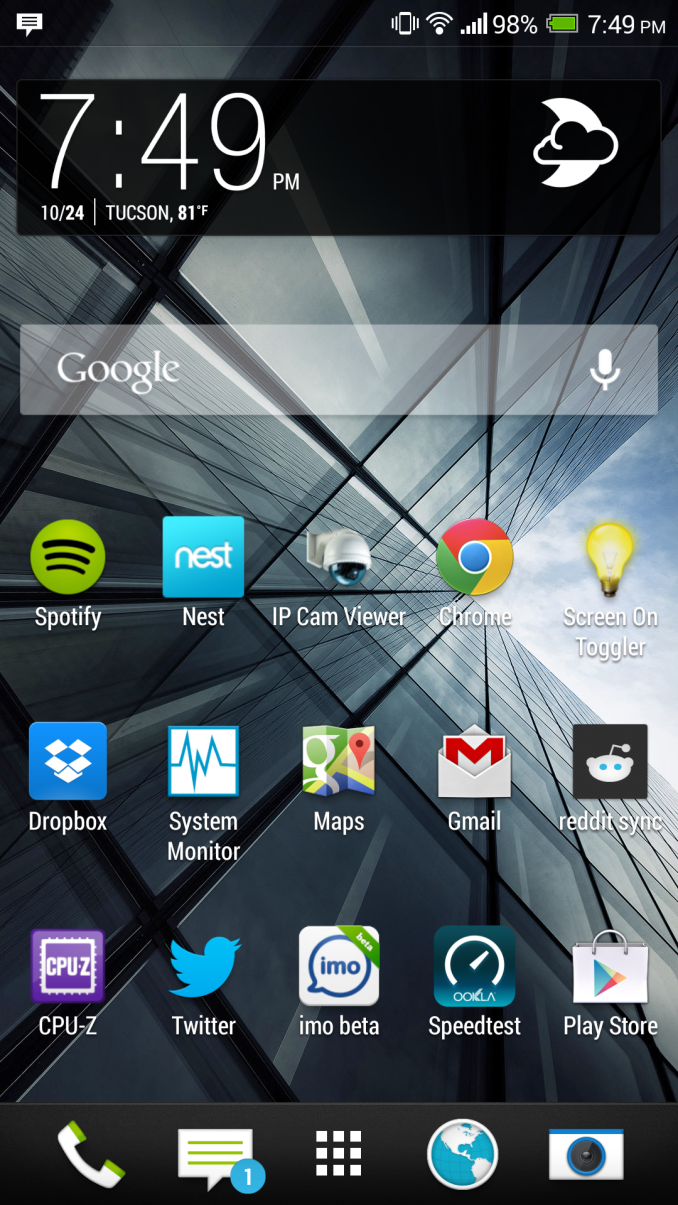
HTC One (Left), HTC One max (Right) – Note the grid and icon size changes
I’m not complaining, it’s just interesting to see 480 in Android but the HTC apps scaled down to give more real-estate, which is what I’d prefer since I have good vision.
One improvement I’m really happy about in Sense 5.5 is a change to the auto brightness function. Rather than just have a checkbox, the One max will allow you to set an upper bound for the auto brightness algorithm. Ideally I would like a higher or upper bound, or a bias function (+/- some delta), but this is a step in the right direction.
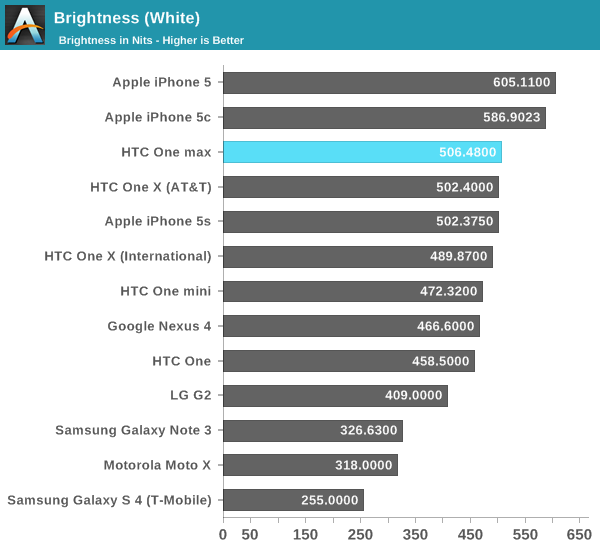
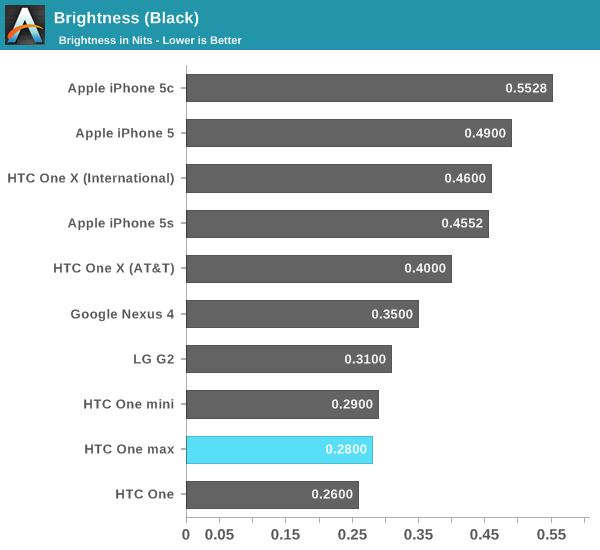
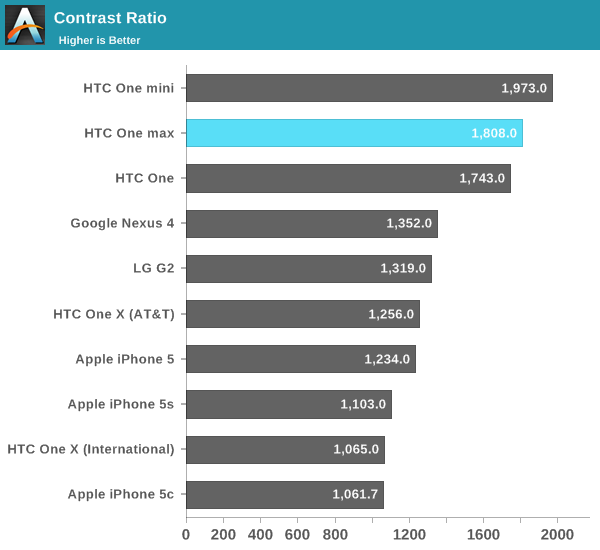
The One max display goes very bright, up to 506 nits, higher than the One or One mini. White point is also a bit more controlled than the One, at 7301 K average. My biggest complaint about the One max is that like the One it has a dynamic brightness/contrast function that adjusts screen brightness as a function of the content being displayed. That alone isn’t a huge problem, it’s just that there’s no way to disable it in the UI, which would be great, since it’s distracting watching screen brightness change as you move around the UI. I would love to see HTC go the Google approach and restrict these functions to full screen video playback, and give the option to turn it off entirely.

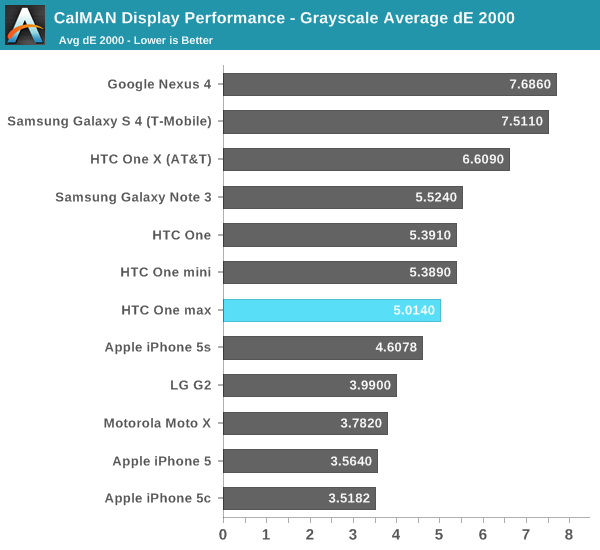
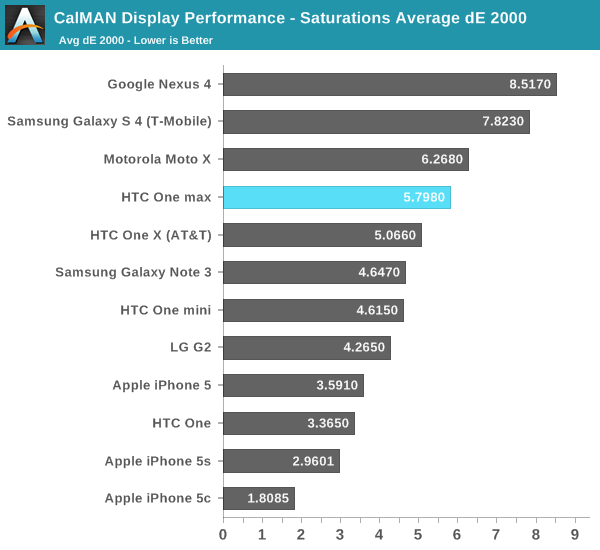


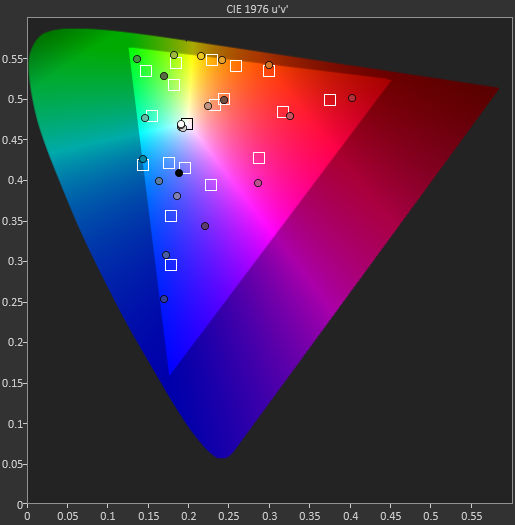
Running it through our display tests, it’s clear that the One max also has a bit of the saturation boost we’ve seen popping up on other phones as well. The saturation curves are great until the second to last point, which is almost set to maximum saturation. I’d love to see even more emphasis on color accuracy for the next generation of phones, the One max seems to be in the general ballpark of the One, but slightly worse.


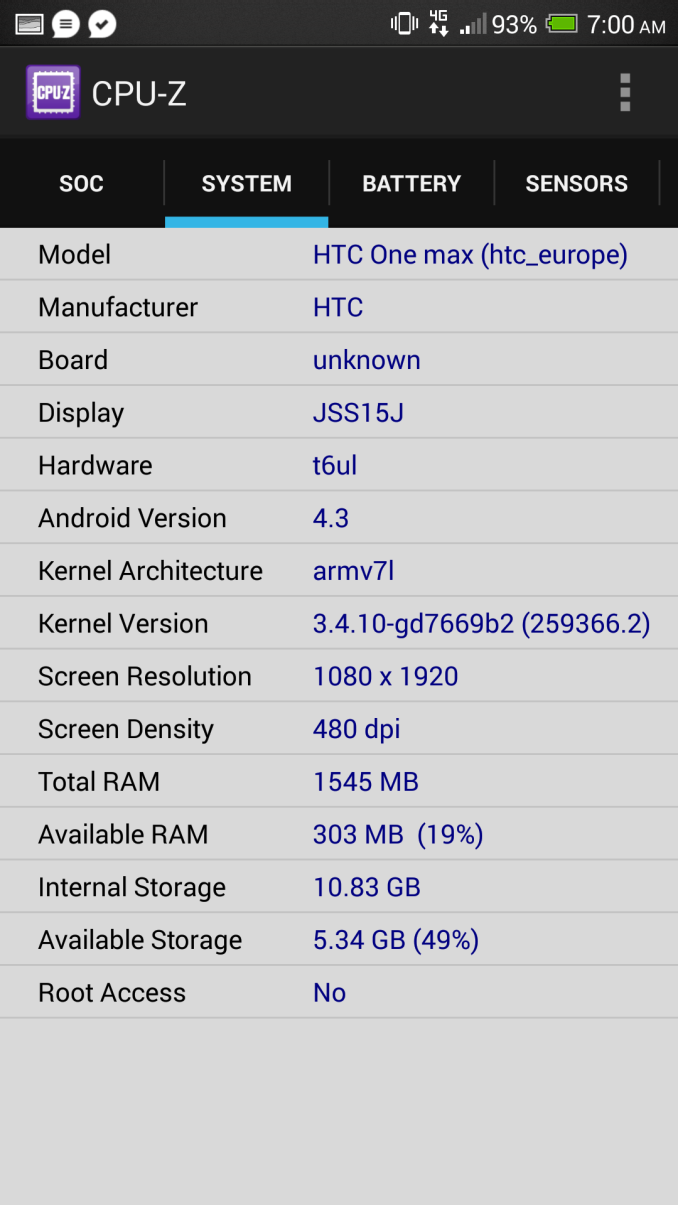
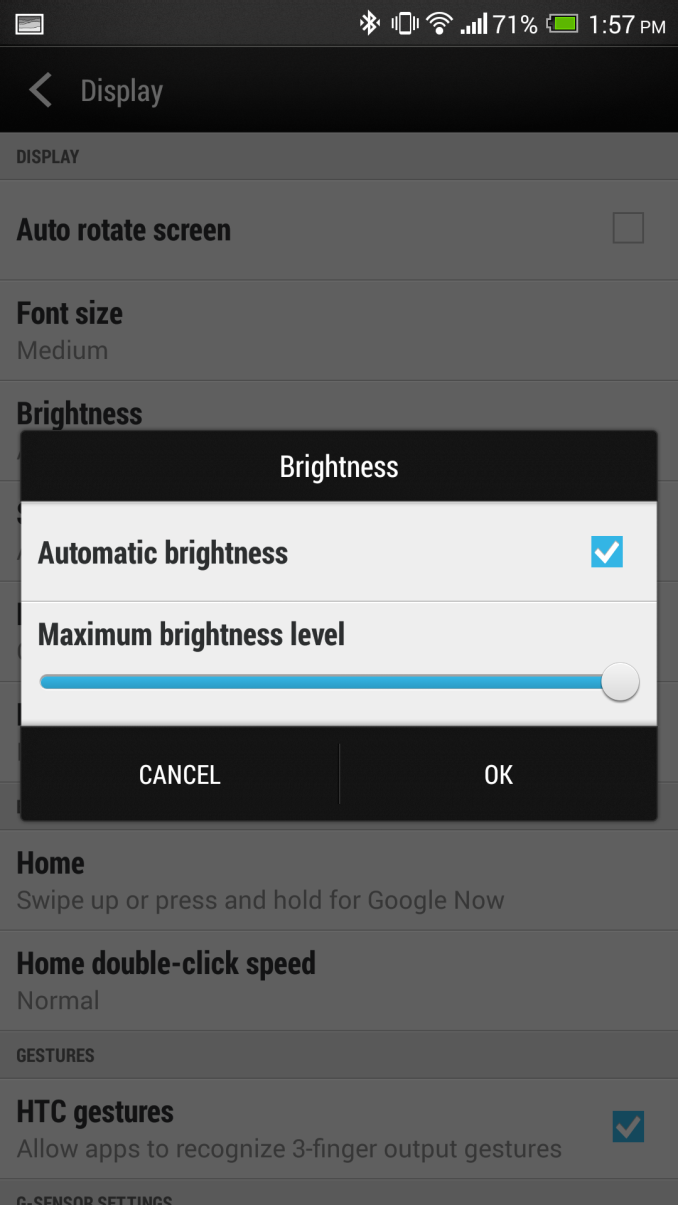









197 Comments
View All Comments
BlakKW - Monday, October 28, 2013 - link
+2cbrownx88 - Monday, October 28, 2013 - link
+3MarcSP - Monday, October 28, 2013 - link
+4hrrmph - Tuesday, October 29, 2013 - link
+5The Saint - Monday, October 28, 2013 - link
"I’ve said my part already on microSD cards and the fact that they’re going the way of the dodo in smartphones, I just don’t need one anymore, and definitely not at the expense of build quality. It is convenient not having to use a SIM ejector tool though, even if I carry one around all the time anyways. For the incredibly small percentage of users that clamors for an SD card every single smartphone launch, it’s at least one point which won’t be belabored so tiresomely this time."That's funny. Seems to me if there's one thing that seems to be going the way of the dodo, it's Android manufacturers like HTC who think prettiness and premium feel are more important than functionality. It will be nice once they go out of business to be able to stop hearing from that tiresome segment of pretend geeks who treat their cellphones like how divas treat their purses - as fashion accessories.
Meanwhile, Samsung will continue laughing by being both the only player that focuses on functionality, and the only player that makes money in the Android world.
nerd1 - Monday, October 28, 2013 - link
Apple charges $100 for 16GB memory and you can find 32GB micro SD at around $15. I wonder why most reviewers conveniently ignore this fact and just compare the baseline price of the products. I can do the math and I won't buy any device without expandability.Drumsticks - Monday, October 28, 2013 - link
I'm not sure that expandibility is the biggest selling point for galaxy phones outside of tech enthusiasts. Most people are not movie hogs etc and find 32GB reasonable. Business users and media enthusiasts on the other hand, would. But they don't represent everyone. Especially with streaming.I think its more brand name appeal and how much more recognizable they are. After all, apple does even better, and its not like they've ever offered MicroSD support.
personally I just think 16GB needs to die, and 32 should be standard up to 128GB in $50 increments max using high quality flash.
Spunjji - Monday, October 28, 2013 - link
Agreed about 16GB needing to die. But why would it when plenty of companies still make an extra $100 per sale by forcing people to upgrade to the minimum serviceable level? At least the Micro SD slot, with all its failings, allows some sort of other option. "pay as you grow" instead of throwing the whole shebang away when your storage needs outpace the crappy little chip soldered into your device.The0ne - Monday, October 28, 2013 - link
My decision on a phone is1. Screen size and resolution
2. MicroSD slot
I use my phone more as a e-reader and media device than a phone. That's not to say I don't use it as a phone normall, I do but it's not all that it does. Duh? Having the MicroSD slot for expansion is Godsend. All my books and technical PDF's are there. All my music, videos and photos are there (just the favorite ones), and so forth.
Why wouldn't you want to have all of those on your phone? It is convenience for me. One device to do what I like to use it for.
Davidjan - Tuesday, October 29, 2013 - link
Agree with you. We can use OTG reader to expand storage like Meenova MicroSD Reader if we want: http://goo.gl/U6IyY